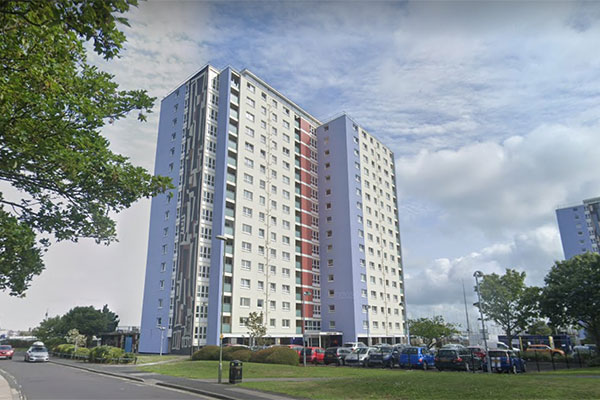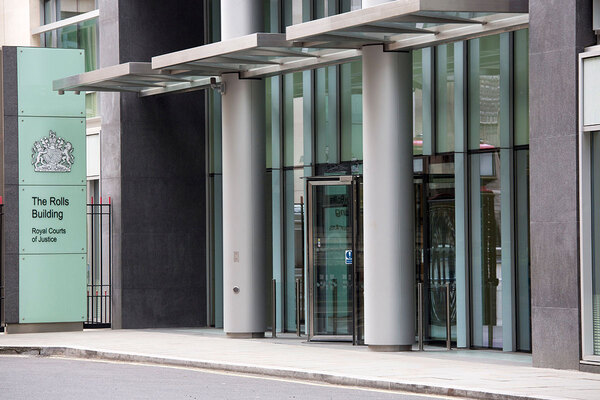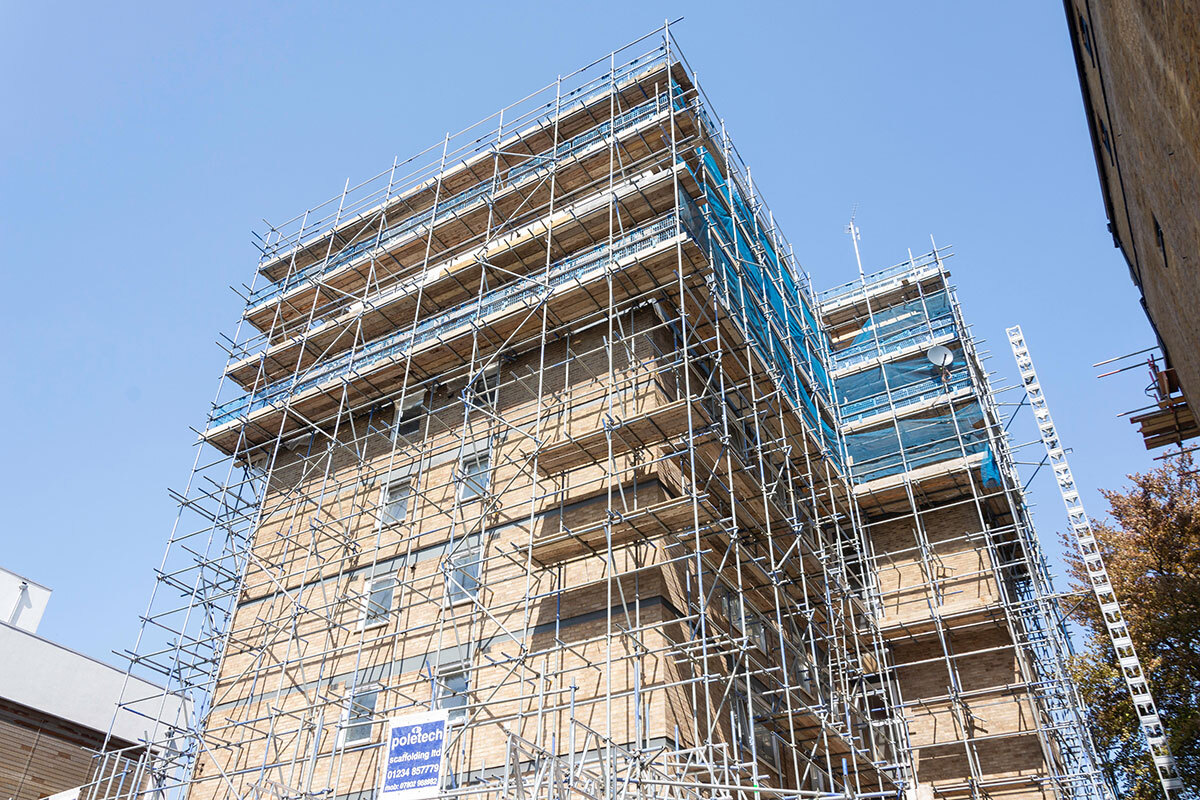Mulalley and Hyde cladding case: what lawyers think the ruling means for the sector
In a landmark ruling this month, a High Court judge ordered a contractor to pay damages to a housing association for cladding remediation work. Grainne Cuffe speaks to lawyers to get their take on what it means for the sector

Two weeks ago, the sector saw the resolution of a significant case regarding a dispute between a housing association and its contractor over the installation of dangerous cladding on a development in Gosport, Hampshire.
Hyde was successful in its claim against Essex-based Mulalley & Co, the contractor that installed the cladding system, after arguing that the specified cladding system did not meet the building regulations at the time of construction between 2005 and 2008. It also believed that there there had been breaches in the installation of the materials.
Mulalley has now been ordered to repay Hyde for costs incurred to replace cladding on five tower blocks.
On hearing the result, Andy Hulme, chief executive of Hyde, described the judgment as a “landmark ruling” which “establishes that the costs of defective work must be borne by those responsible for it”.
But what are the legal implications of the ruling for social landlords – and how far-reaching will they be? Inside Housing speaks to lawyers across the housing sector to understand the significance of the case.
The case
Hyde, which brought the case via its subsidiary Martlet Homes, purchased five 1960s concrete high rises in Gosport that were reclad in the mid-2000s by Mulalley.
The housing association uncovered issues with the blocks in 2017, shortly after the Grenfell Tower fire, including combustible expanded polystyrene insulation boards and defects in the installation of fire barriers.
Hyde decided to remove the entire cladding system and replace it with a new, non-combustible cladding system, without charging its residents and not receiving any government funding due to the speed with which the cladding was removed. The work was carried out from 2018 to 2020.
The housing association started proceedings against Mulalley in 2019. Its claim was for cladding removal costs, as well as waking watch costs, with a view to recovering £8m.
The housing association argued that there had been breaches in the way Mulalley had installed the cladding system and that the specified cladding system did not meet the building regulations at the time of the work in the 2000s.
In response, Mulalley accepted that there were some defects in the installation of the system, but said that Hyde decided to replace the system because of the concerns raised about combustible installation following the Grenfell Tower fire.
The contractor therefore argued that it was not liable to pay for the work as Hyde had chosen to replace the cladding system, rather than repair the defects.
The judge sided with Hyde, making the important finding that the cladding system did not comply with the building regulations at the time of installation.
The judge said the latter argument regarding the specification of the cladding system “is of particular interest, since it raises for determination the question whether or not the specification of combustible [external wall insulation] rendered cladding breached fire safety standards as they existed in the early to mid-2000s, well before the Grenfell Tower fire”.
They added: “However, like most other similar cases this case turns very much on the specific contractual provisions and the specific fire safety standards applicable to the particular product chosen as well as on the particular cases pleaded and argued and the evidence called.”
The case also follows the passing of the Building Safety Act, which limits the amount of money leaseholders can be charged for remediation work and puts the legal responsibility on developers and freeholders instead.
What the lawyers think
Lawyers have told Inside Housing that it all comes down to what is specified in a building contract, rather than setting a precedent that contractors will be liable in all cases. This is because the case was on breach of contract, rather than the Defective Premises Act (DPA) 1972.
Section 1 of the DPA requires those involved in constructing a property to ensure that it is ‘fit for habitation’ when the work is completed. If that does not end up being the case, whoever commissioned the build or subsequent owners – whether outright, leaseholder or freeholder – can claim for compensation.
The Building Safety Act 2022 extended the limitation periods for claims from six to 30 years for retrospective claims, and from six to 15 years for prospective claims. It also extended liability to works carried out on existing properties. Prior to the change, the DPA applied only to new buildings.
Mark Foxcroft, a partner at Devonshires specialising in housing management and property litigation, says that the judgment “provides useful guidance” as to how the courts are likely to approach such claims.
However, he caveats that by saying it is a decision about the “interpretation” of the specific building contract that was in place for the relevant works.
“This was not a claim where breach of Section 1 of the DPA was being alleged, which we expect to see a lot more of following the retrospective limitation extension for such claims introduced by the Building Safety Act 2022,” Mr Foxcroft says.
“This was a claim for breach of the terms of a building contract. Each claim of this nature will, of course, turn on the specific terms and obligations that are laid out in the relevant building contract.
“What we can’t therefore say following this decision is that every time fire safety defects are alleged to be a breach of building contract, this is going to be the result.”
Mr Foxcroft says that despite the case being about contracts rather than the DPA, “there is a lot of useful guidance in the decision about the way the court approached and will potentially in the future approach such claims for breaches of a building contract in relation to fire safety issues to cladding systems”.
He says it is “particularly interesting” that the judge found that the costs incurred for the provision of waking watch “were recoverable in damages and not too remote”.
On whether other registered providers are likely to go down the same route, Mr Foxcroft says: “It’s still early doors but this decision is clearly encouraging for registered providers in similar positions and, conversely, will strike a cautionary tone for contractors and insurers.
“One thing that I suspect we will see following this decision is a renewed focus on early negotiation in these claims, in order to reach a compromise as it seems to me that this should be a warning to parties that it ultimately serves nobody to end up at trial given the costs involved.”
Giles Peaker, a partner in the housing department at Anthony Gold Solicitors, says that part of the case is “completely straightforward – the works were not done to the specification”.
“This was a simple breach of contract,” he says.
But he says that the other part – whether the works, even if done to specification, were in breach of contract because of materials used – is “trickier”.
“The judge appears to have concluded that there was a contractual obligation to consider the 2003 [Building Research Establishment] advice, which wasn’t done or the material wouldn’t be used,” Mr Peaker says.
“The general principle that housing associations can sue contractors for the cost of remediation if the works were in some way in breach of contract that required the whole of the remediation works to be done is sound, but that was always the case.
“That said, the judgment does offer some confidence to housing associations in the way it approaches the building regulations and associated documents that similar claims would be successful.”
How it would work in relation to the DPA is “another matter”, Mr Peaker says.
“Still, it is the first major post-Grenfell external wall system judgment. It only took two-and-a-half years, a detour to the Court of Appeal and doubtless millions in legal costs,” he adds.
Although clearly it will be down to the specifics of contracts, will we see other social landlords follow suit?
Paul Scott, a partner in Trowers & Hamlins’ disputes resolution department, says that while no two disputes are ever the same, the ruling may lead other organisations in Hyde’s position to bring similar claims.
“The fact that the court has found that the decision to carry out remedial works and implement a waking watch was justified in this case by reference to the relevant technical and legal framework applicable at the time may strengthen the resolve of other parties in Martlet’s position to push forward with similar claims,” he says.
Sign up for our fire safety newsletter
Already have an account? Click here to manage your newsletters











